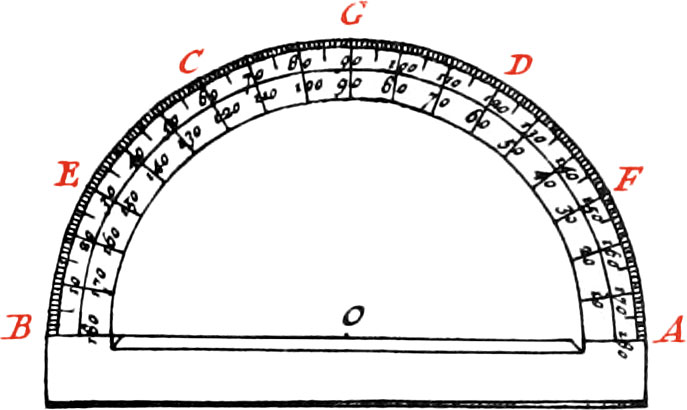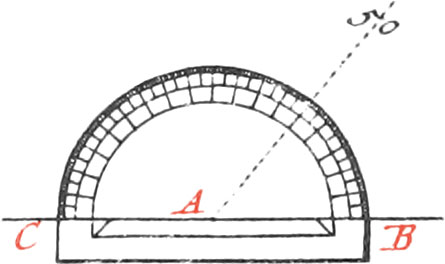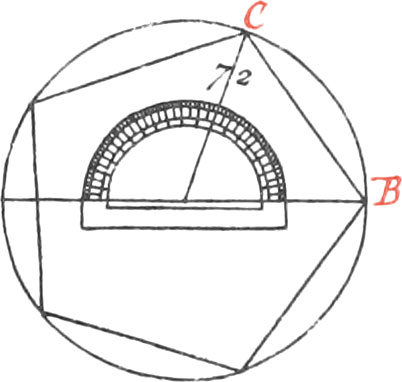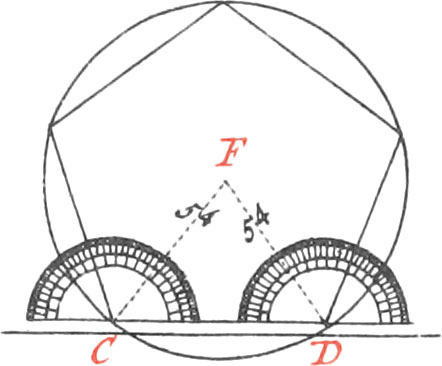One Side of this Instrument is filed flat, for better applying it on the Paper; and the other Side is sloped; that is, made thin towards the Edge whereon the Divisions are: and for better discovering the Points wherein Angles terminate, there is a small semicircular Notch made in the Center of the Instrument.
How to divide the Limb of the Protractor.
Upon the Line AB, and about the Center O, describe a Semicircle; then carry the Radius AO round the Circumference, which will divide the Semicircle into three equal Parts, in the Points C, D, each of which is 60 Degrees. Again, divide the Arc BC into two equal Parts, in the Point E, and the Arc BE, will be 30 Degrees: then turning this Opening of your Compasses round the Semicircle, it will divide it into six equal Parts. Moreover, divide them again into three equal Parts, and each will be 10 Degrees; and dividing every one of these 10 Degrees into two equal Parts more, Arcs of 5 Degrees will be had. And lastly, in subdividing each of these Arcs of 5 Degrees, into five equal Parts, Arcs of one Degree will be had.
In the same manner may a whole Circle be divided into 360 Degrees, which we shall speak of hereafter.
Note, Protractors are sometimes made of Horn, which, because they are transparent, are commodious enough; but they ought to be kept in a Book when they are not using, because the Horn is apt to wrinkle.



